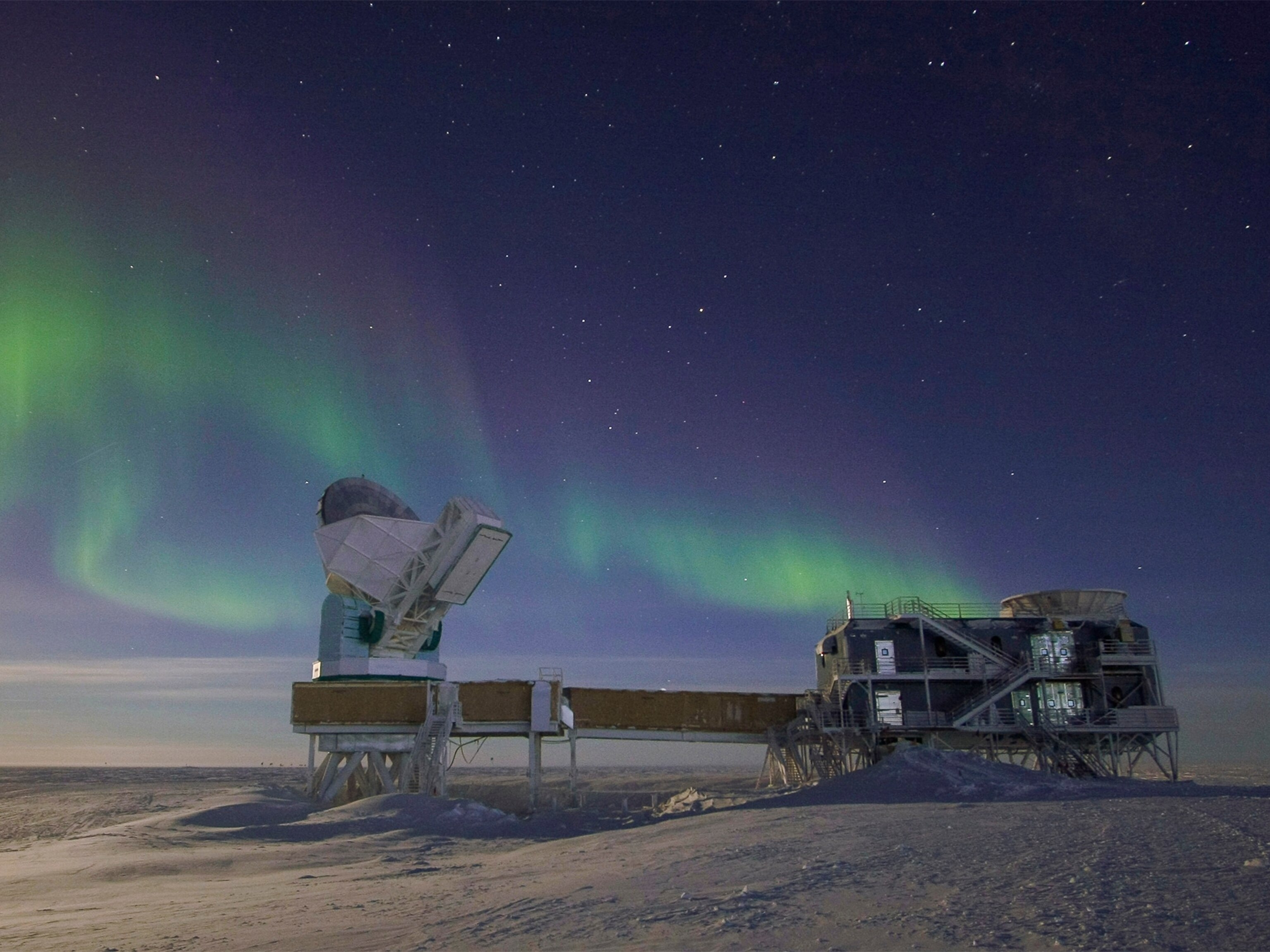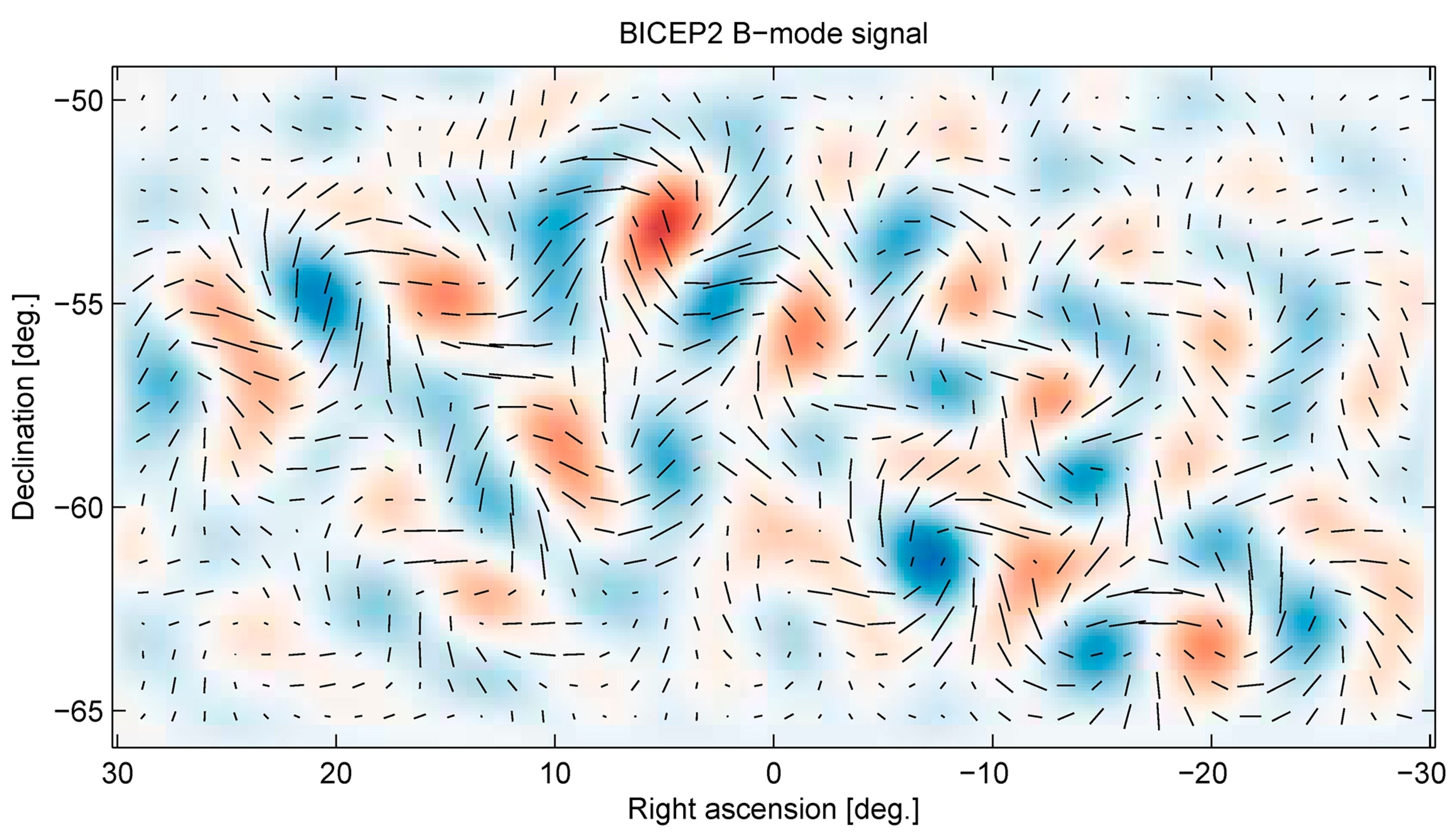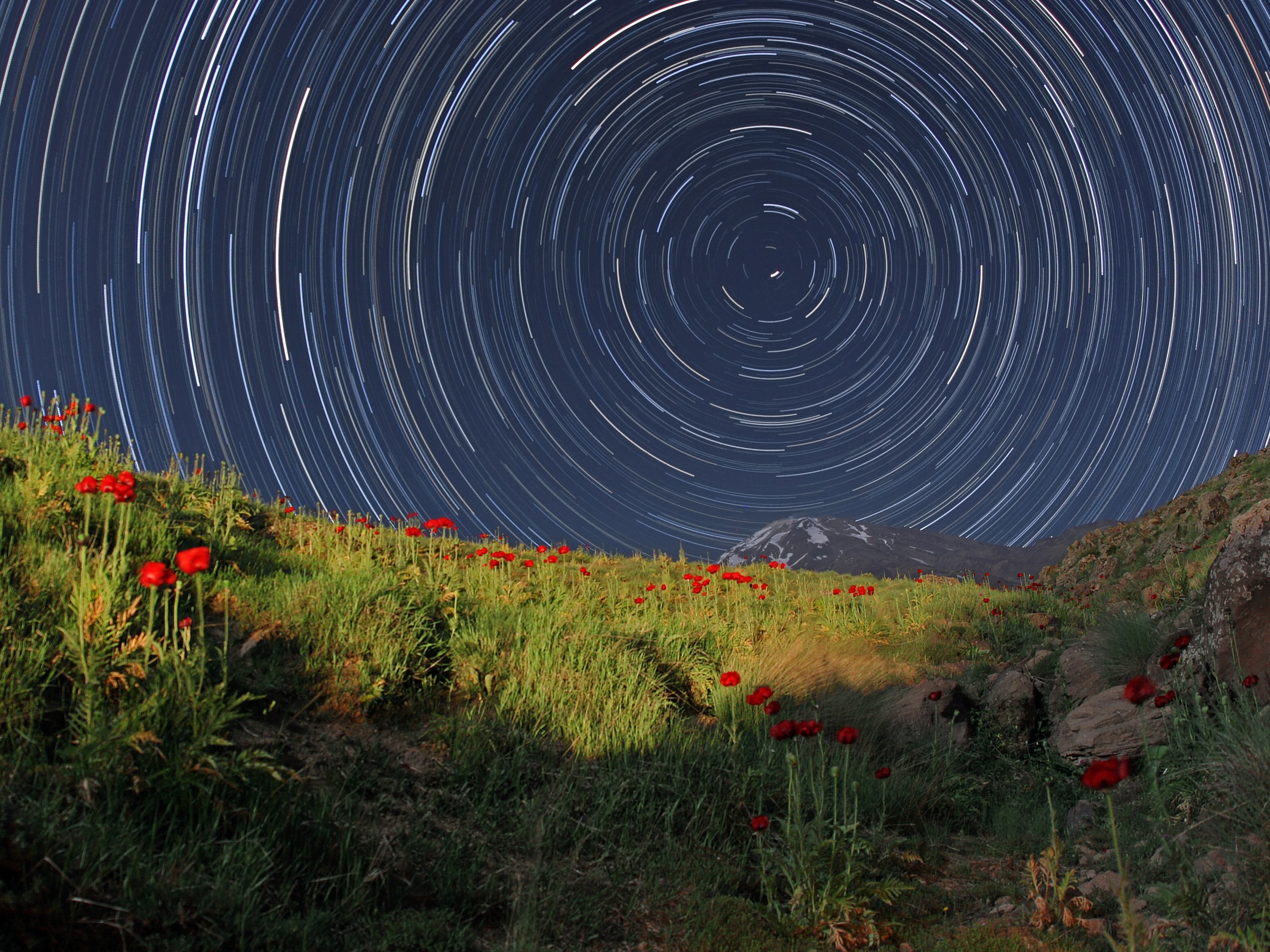
Grand Cosmological Claim Crumbles?
The team behind the physics find of the year is taking a step back from its confident claims.
One of the grandest claims in cosmology could be crumbling. The detection of gravitational wave imprints in the universe's background radiation, announced amid much fanfare in March, was originally described as a discovery "as big as it gets."
These gravitational swirls, called B-modes, are supposed confirmation of a theory known as inflation, which says that the universe expanded exponentially in the first trillionth of a trillionth of a trillionth of a second after the big bang.
But in the intervening months, scientists have begun to cast doubt on the finding, calling into question the discovery team's analysis of its data. Chiefly, concerns have centered on swirls produced by galactic dust in the sky—contamination the team may not have properly accounted for.
Now, the BICEP2 collaboration has published a report of its discovery in Physical Review Letters. Although the collaboration has stood by its results for a few months, it's now dialing back on its original claim.
We "cannot empirically exclude dust emission bright enough to explain the entire excess signal," the authors write, noting that they still think the evidence suggests they're seeing a real signal from gravitational waves.
Cosmic Swirls
When the BICEP2 team announced its discovery in March, talk of future Nobel Prizes immediately began swirling. But the tide turned quickly as scientists started scrutinizing the then-unpublished results.
First, Internet bloggers began questioning whether the team had properly estimated the amount of polarization resulting from foreground galactic dust, which can also produce B-modes. To determine how much of the detected swirly signals are the result of gravitational waves, scientists needed to first find out how much this dust contributed to the overall signal. Then they needed to subtract the dust contribution.
The team based one of these analyses on a digitized version of a foreground dust map—pulled from a Powerpoint presentation by a member of the Planck collaboration, which is looking for similar signals.
"This is not sound methodology," said Princeton University physicist Lyman Page at a May 15 seminar at Princeton. "You can't do science by digitizing other people's images."
Then, physicist Raphael Flauger, who splits his time between Princeton University and New York University, attempted to retrace the BICEP2 team's march through the data. He suspected that the team had misunderstood that crucial Planck map, and he concluded that there was too much uncertainty in the measurements to point to a signal from gravitational waves. "I'm hopeful that there is still a contribution to the signal from inflation, but one needs more data," Flauger says.

Waiting for Planck
In the paper formally detailing their gravitational wave finding that was just published, the BICEP2 team has excluded one of the analyses based on the Planck map, noting "the large uncertainties on this and the other dust models presented." But the team continues to stand by its claims—although perhaps with a bit more reservation.
"Has my confidence gone down? Yes," team leader Clement Pryke, of the University of Minnesota, told New Scientist.
Flauger and others suggest waiting for data from the Planck collaboration and from other experiments attempting to replicate the BICEP team's analysis.
"We will soon know whether what BICEP2 is seeing is in fact—at least in part—the signal from an early inflationary period," he says. "Or if what they see is emission from polarized dust in our own galaxy."
Follow Nadia Drake on Twitter.





